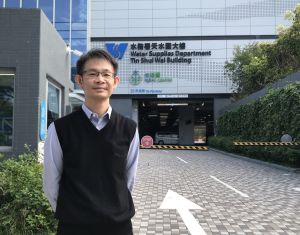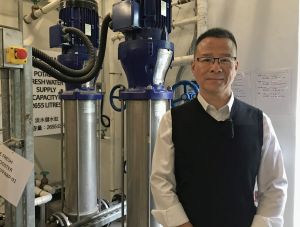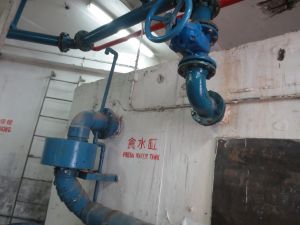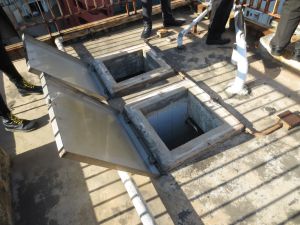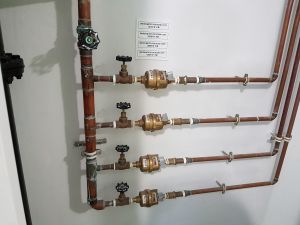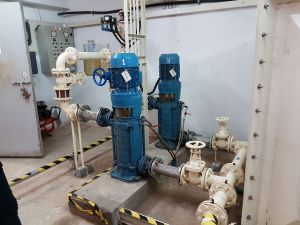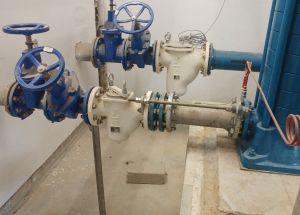Water Safety Plan Subsidy Scheme
|
The drinking water supplied by the Water Supplies Department (WSD) undergoes rigorous treatment processes to ensure its quality complies with the Hong Kong Drinking Water Standards. However, drinking water quality could be affected by the internal plumbing systems of buildings; therefore, the WSD has been encouraging property owners and management agents to implement the Water Safety Plan for Buildings (WSPB) at their premises. The Chief Executive also announced in the 2019 Policy Address the launch of the Water Safety Plan Subsidy Scheme (WSPSS) to provide eligible property owners with financial support to encourage them to implement the WSPB. This time, I have invited the colleagues from the WSD to talk about the details of the two plans. A representative of an owners’ corporation (OC) also shares the benefits of participating in the WSPB. Subsidising property owners to implement water safety plan Drinking water safety is vital. Senior Chemist of the WSD, Mr YU Man-tat, says that the WSD has been promoting the implementation of the WSPB in buildings since 2017 in order to further safeguard drinking water safety. However, currently, the implementation of WSPB is voluntary, property owners and management agents of buildings may be reluctant to implement the WSPB due to technical problems or their unfamiliarity with the WSPB The five-year WSPSS is allocated with a funding of $440 million for subsidising the eligible property owners or management agents of private buildings to implement the WSPB, including carrying out water safety risk assessments on the internal plumbing system of the building and formulation of WSPB, conducting specific checkings and maintenance works for internal plumbing system. If necessary, the scheme will also cover the subsidy on rectification works and measures for internal plumbing systems recommended in the risk assessments. The subsidy scheme will be open for application from 13 July and is expected to benefit about 5 000 buildings. Ensuring proper management and maintenance of internal plumbing systems Regarding the implementation of the WSPB, Senior Engineer of the WSD, Mr LEUNG Wai-kwong, says that the first step is to assign a Designated Person (DP). A DP can be a person familiar with the operations of the building, such as a property management officer, to be responsible for co-ordinating the implementation of the WSPB. A DP is also responsible for engaging a Qualified Person (QP), such as a licensed plumber, building services engineer or building surveyor, to conduct a water safety risk assessment of the building’s internal plumbing system. A DP is to perform general checking duties according to the WSPB, such as routine inspections of potable water storage tanks and checking for leakages in the pipes, while a QP is to conduct specific checking on the performance of the water pumps, the operation of the valves, water pressure, etc. According to Mr LEUNG Wai-kwong, the WSPB can raise the awareness of property owners, users and property management officers about the importance of proper maintenance of internal plumbing systems. It also gives them a better understanding of how to effectively manage the internal plumbing systems of their buildings, such as the importance of using compliant plumbing materials. A DP is to arrange an audit on the implementation of the WSPB at least once every two years with a view to further enhancing the implementation of the WSPB. OC’s commendation for the right direction of the WSPB Mr KO, the secretary of a building’s OC, says that the implementation of the WSPB is headed in the right direction, particularly for buildings like theirs that are relatively old (e.g. buildings that have not engaged a property management company), as the WSPB can give the OC a better understanding of how the internal plumbing system operates and enable it to take note of areas that require attention or improvements. Besides, as the WSPB has provided clear guidelines so that they can handle the work required, such as the conduct of specific checking on the internal plumbing system after engaging a QP, the drinking water safety at their premises can then be enhanced. The implementation of the WSPB involves the internal plumbing system of a whole building, so the joint efforts of the property owners there are required. I believe, with the Government’s launch of the WSPSS this year, property owners will be encouraged to take the first step to implement the WSPB to further enhance drinking water safety. |
5 July, 2020
Back